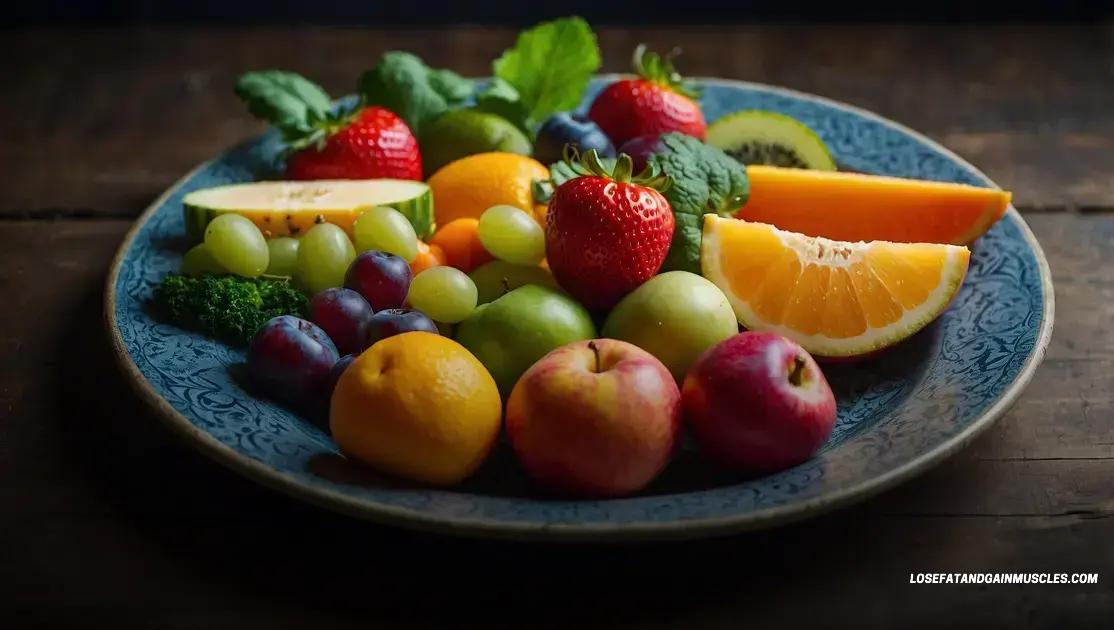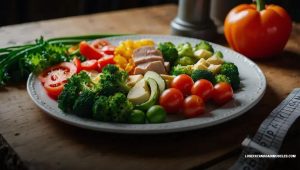Will I Lose Belly Fat If I Gain Muscle? Discover the Truth!
You can lose belly fat while gaining muscle by following a balanced diet rich in protein and engaging in both strength training and cardiovascular exercises. This combination increases metabolism, promotes fat loss, and builds lean muscle effectively.
Will I lose belly fat if I gain muscle? This question often arises in the fitness community. Many people strive for that lean, toned physique but are confused about how muscle gain affects overall fat loss. Understanding this relationship is crucial for optimal results in your fitness journey. In this article, we’ll break down the science behind muscle gain, how it influences your metabolism, and practical tips to achieve your body goals.
Understanding the relationship between muscle gain and fat loss
Understanding the relationship between muscle gain and fat loss is essential for anyone looking to improve their physique. When you build muscle, your body undergoes several changes that can ultimately affect how you store and lose fat.
What Happens When You Gain Muscle?
As you add muscle mass, your body requires more energy to maintain that muscle. This increase in energy demands can boost your metabolism. A higher metabolism means that your body burns more calories even when at rest, which can contribute to fat loss.
The Role of Body Composition
It is important to consider body composition, which refers to the ratio of fat to lean mass in your body. Gaining muscle while losing fat improves body composition, leading to a healthier and more aesthetically pleasing physique. Even if the scale doesn’t show a dramatic change, you can still look leaner if you are building muscle and reducing fat.
Caloric Balance
For fat loss to occur, you must maintain a caloric deficit, meaning you burn more calories than you consume. Gaining muscle does not negate the need for a healthy diet and proper caloric management. Combine strength training with cardiovascular exercise and a nutritious diet to achieve optimal results.
Hormonal Changes
Building muscle can also influence hormone levels in the body. Increased muscle mass can lead to higher levels of anabolic hormones like testosterone, which can aid in fat loss. Additionally, a good balance of hormones plays a key role in regulating your appetite and metabolism.
Individual Variability
Everyone’s body reacts differently. Factors such as genetics, age, and lifestyle can influence how effectively you can gain muscle while losing belly fat. Listening to your body and adjusting your training and nutrition plan accordingly is crucial in this journey.
Conclusion on Muscle Gain and Fat Loss
By understanding the interconnection between muscle gain and fat loss, you can better strategize your fitness goals. Remember, while gaining muscle is a wonderful goal, it should be paired with a well-rounded approach that includes a focus on body composition and dietary choices.
How building muscle affects metabolism

How building muscle affects metabolism is a topic of great interest for many fitness enthusiasts. Muscle plays a critical role in determining your body’s metabolic rate.
Metabolic Rate Basics
Your metabolic rate refers to the number of calories your body burns at rest. This rate is influenced by several factors, including age, gender, and, importantly, muscle mass. The more muscle you have, the higher your resting metabolic rate will be.
Muscle Tissues and Energy
Muscle tissues are metabolically active, meaning they consume energy even when you’re not exercising. When you build more muscle, your body requires more calories to maintain that muscle. This results in a higher overall energy expenditure throughout the day.
The Role of Strength Training
Strength training is vital for muscle building. Engaging in resistance exercises can lead to muscle hypertrophy, which increases the size and number of muscle fibers. As you lift weights and challenge your muscles, you create micro-tears that repair and grow stronger. This process boosts your metabolism for hours after your workout, leading to additional calorie burn.
Post-Workout Effects
After exercising, your body enters a recovery phase known as excess post-exercise oxygen consumption (EPOC). During this phase, your metabolism remains elevated as your body works to repair damaged tissues and restore energy levels. This means you will continue burning extra calories even after you have finished your workout.
Long-term Benefits of Increased Muscle Mass
Building muscle not only helps in burning more calories but also contributes to overall health. Greater muscle mass can improve insulin sensitivity and lower the risk of chronic diseases, making it easier to maintain a healthy weight.
Individual Factors Influencing Metabolism
It’s essential to remember that individual variations affect how muscle gain will impact metabolism. Factors such as genetics, age, and hormonal levels play a significant role. What works for one person may differ for another, but the general trend remains: more muscle generally means a higher metabolism.
The role of diet in losing belly fat while gaining muscle
The role of diet in losing belly fat while gaining muscle is crucial for anyone on a fitness journey. Diet plays a big part in how your body responds to exercise and muscle building.
Understanding Caloric Intake
To lose belly fat, you need to be in a caloric deficit, meaning you burn more calories than you consume. However, when gaining muscle, you must ensure that you’re also eating enough to support growth. Finding a balance is key.
Choosing the Right Macros
Your diet should include a balance of macronutrients: proteins, fats, and carbohydrates. Protein is essential for muscle repair and growth, while healthy fats support hormone production. Complex carbohydrates provide the energy needed for workouts. Aim for a diet rich in whole foods to supply these nutrients.
Protein Needs for Muscle Gain
When working to gain muscle, aim for approximately 0.6 to 1 gram of protein per pound of body weight daily. This can help enhance muscle protein synthesis and recovery. Include sources like lean meats, fish, eggs, dairy, and plant-based proteins.
Healthy Fats and Their Importance
Don’t shy away from fats, as they are vital for your body. Healthy fats, found in foods like avocados, nuts, seeds, and olive oil, can help in calorie intake while promoting heart health and hormone balance.
Carbohydrates for Energy
Carbs are crucial for powering your workouts. Focus on complex carbs from whole grains, fruits, and vegetables. These provide sustained energy and help replenish glycogen stores after exercise.
Hydration Matters
Staying hydrated is often overlooked. Water helps in digestion and nutrient absorption. Aim for at least 8 glasses per day, and increase your intake during intense workouts to promote performance and recovery.
Meal Timing for Maximum Effect
Consider meal timing to optimize your results. Eating protein and carbs after a workout can promote recovery and muscle growth. Pre-workout meals should also focus on fueling your body effectively.
Effective exercises for gaining muscle and losing belly fat

Effective exercises for gaining muscle and losing belly fat are essential for achieving your fitness goals. A combination of strength training and cardiovascular workouts offers the best results.
Strength Training Basics
Strength training involves lifting weights or using resistance to build muscle. Focus on compound movements that work for multiple muscle groups at once. These exercises are more efficient for burning calories and building muscle.
Squats
Squats are an excellent exercise for building muscle in your legs and glutes. Stand with your feet shoulder-width apart, lower your body as if sitting in a chair, and then rise back up. Adding weights will increase the difficulty.
Deadlifts
Deadlifts target several muscles, including hamstrings, glutes, and back. Keep your feet hip-width apart, bend at your hips and knees, and lift the weight while keeping your back straight. This move is great for overall strength and fat loss.
Push-Ups
Push-ups are a bodyweight exercise that works your chest, shoulders, and triceps. Begin in a plank position, lower your body to the floor, and push yourself back up. Modify by starting on your knees if needed.
Pull-Ups
Pull-ups are fantastic for building upper body strength. Use a pull-up bar, grip it with your palms facing away, and pull your body up until your chin is above the bar. If you can’t do a full pull-up yet, use an assisted machine or resistance bands.
High-Intensity Interval Training (HIIT)
HIIT combines short bursts of intense exercise with rest. This can include exercises like burpees, jump squats, and sprints. HIIT is effective for burning fat while preserving muscle.
Cardio for Fat Loss
Incorporating regular cardio exercises, like running, cycling, or swimming, helps increase your calorie burn. Aim for at least 150 minutes of moderate-intensity cardio each week while balancing it with strength training.
Core Exercises
Building a strong core is vital for overall fitness. Exercises like planks, leg raises, and Russian twists target your abdominal muscles and help improve stability for other workouts.
Common myths about muscle gain and belly fat
Common myths about muscle gain and belly fat can often confuse those trying to achieve their fitness goals. Understanding these myths is essential for creating a successful workout and diet plan.
Myth 1: Lifting Heavy Weights Makes You Bulky
Many believe that lifting heavy weights will automatically make them bulky. In reality, building significant muscle mass requires a specific training and nutrition plan. For most people, strength training leads to a toned physique rather than large muscles.
Myth 2: You Can’t Lose Fat While Gaining Muscle
Some think that it is impossible to lose fat while gaining muscle. This is not true. With proper diet and exercise, it is possible to build muscle while losing body fat. The key lies in maintaining a slight caloric deficit while providing enough protein for muscle growth.
Myth 3: Cardio is the Best Way to Lose Belly Fat
While cardio helps in burning calories and losing fat, it is not the only solution. Strength training is equally important, as it builds lean muscle mass, which can increase your metabolic rate and help in fat loss.
Myth 4: You Should Eat Less to Lose Weight
Another common myth is that eating less is the only way to lose weight. While a caloric deficit is necessary, it is essential to maintain a balanced diet rich in nutrients. Eating too little can hinder muscle gain and overall health.
Myth 5: All Calories Are Created Equal
Not all calories are equal when it comes to nutrition. The quality of the food you eat matters. Focusing on whole, nutrient-dense foods will support your muscle gain and fat loss more effectively than processed foods, even if they have the same calorie content.
Myth 6: You Can Spot Reduce Belly Fat
Many people believe that they can target belly fat through specific exercises. However, spot reduction is a myth; fat loss occurs throughout the body. Combining full-body workouts with a healthy diet is the best strategy.
Myth 7: Supplements Are Required for Muscle Gain
While some supplements can support muscle growth, they are not essential for everyone. A well-balanced diet with sufficient protein can provide the necessary nutrients for muscle gain. Focus on whole foods first before considering supplements.
Real-life success stories of muscle gain and fat loss

Real-life success stories of muscle gain and fat loss can inspire and motivate anyone looking to improve their fitness. Here are several examples of individuals who have achieved remarkable results through dedication and hard work.
Success Story 1: Sarah’s Transformation
Sarah, a 28-year-old teacher, struggled with her weight for years. After having two kids, she wanted to regain her fitness. Sarah decided to combine strength training with high-intensity interval training (HIIT). Over the course of a year, she lost 30 pounds and gained muscle, transforming her body and boosting her confidence.
Success Story 2: Mike’s Journey
Mike, a 35-year-old office worker, spent most of his time sitting at a desk. Realizing he needed to make a change, he began lifting weights and focused on a high-protein diet. Within six months, Mike lost 25 pounds of fat and gained noticeable muscle mass. He now feels more energetic and enjoys his workouts.
Success Story 3: Emily’s Challenge
Emily, a 22-year-old college student, faced issues with body image. She took up strength training and adjusted her diet to include more whole foods. In one year, she lost 15 pounds of fat and gained significant muscle. Emily now participates in local fitness competitions, fulfilling a dream she never thought possible.
Success Story 4: David’s Commitment
David, aged 40, wanted to improve his health after a family history of heart disease. He started a comprehensive program that included resistance training, cardio, and a balanced diet. In just eight months, he lost 40 pounds and increased his muscle mass. David’s doctor praised him for significantly improving his health markers.
Success Story 5: Lisa’s New Lifestyle
Lisa, a 30-year-old nurse, was always on her feet but struggled with her weight. She decided to take control by tracking her nutrition and incorporating weight lifting into her routine. Over the next year, she lost 50 pounds and developed lean muscle. Lisa now advocates for a healthy lifestyle to her patients, inspiring them to make similar changes.
Success Story 6: John’s Athletic Goals
John, a 27-year-old athlete, wanted to improve his performance. He focused on strength training while ensuring adequate caloric intake to support muscle growth. In a matter of months, John lost fat and gained muscle, enhancing both his speed and agility in his chosen sport.
Embracing Your Fitness Journey
Ultimately, losing belly fat while gaining muscle is a complex process that involves understanding the relationship between diet, exercise, and individual goals. The key to success lies in combining effective strength training with proper nutrition while dispelling common myths that can hold you back.
Real-life success stories serve as powerful examples of what can be achieved through dedication, persistence, and a tailored approach to fitness. Remember, everyone’s journey is unique, and what works for one person may not work for another.
Stay motivated, keep educating yourself on best practices, and celebrate your progress, no matter how small. With the right mindset and a commitment to your goals, you can achieve the body transformation you desire.
So take that first step, remain consistent, and embrace the journey toward a healthier, fitter you!
FAQ – Common Questions About Losing Belly Fat and Gaining Muscle
Can I lose belly fat while gaining muscle?
Yes, it is possible to lose belly fat while gaining muscle with a proper diet and consistent exercise routine that combines strength training and cardio.
What role does diet play in this process?
Diet is crucial; you need to maintain a caloric deficit for fat loss while ensuring adequate protein intake to support muscle growth.
How often should I work out to achieve these goals?
Aim to work out at least 3 to 5 times a week, incorporating both strength training and cardiovascular exercises for the best results.
Are there exercises specifically for losing belly fat?
While you can’t target belly fat specifically, compound exercises like squats, deadlifts, and HIIT workouts can help burn fat and build muscle overall.
What are some common myths about muscle gain?
Common myths include that lifting weights will make you bulky or that you cannot lose fat and gain muscle simultaneously. Proper training and nutrition can help you achieve both.
Do I need supplements to gain muscle?
Supplements are not necessary; you can achieve your goals through a balanced diet rich in whole foods, although some may choose to use protein powders to meet their requirements.













